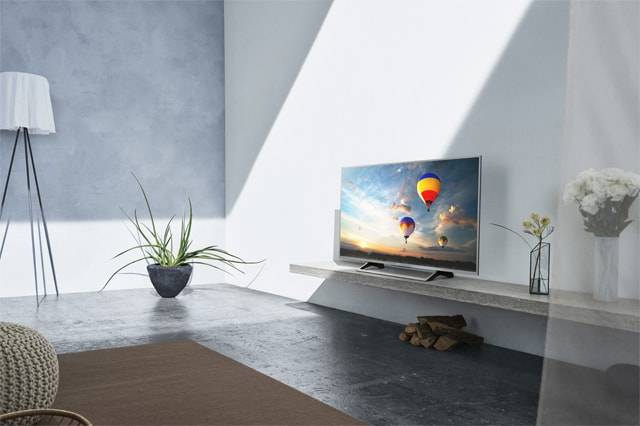Go to a television showroom or peruse an online HDTV catalog and you will be inundated with a long list of specs, likely to be filled with acronyms and numbers. Don’t blame yourself if you can’t easily understand these at first glance. Few can.
There are many things to consider when buying a new TV. So, it is normal to get frustrated or intimidated by all these terms in front of you. But don’t be worry, we’re here to help. Below, find the definition of the most common modern TV terms you’ll come across. Having an overview understanding of these will definitely help you make a wiser buying decision.
HDTV
HDTV means High-Definition TV and refers to the television display technology most commonly used today. They use digital signals instead of analog. Expect crisper and more vivid pictures on screen. There are many types of HDTV though, each category with the best specifications for various viewing needs. These often have 1080p resolution or a little bit more.
UHD or UHDTV
Both acronyms refer to the same thing – Ultra High-Definition TV. Basically, this is a display technology that is a step above HDTV. Screen resolutions will be around 4,000 pixels (often labeled as 4K UHD) or 8,000 pixels (8K UHD). This means that UHDTVs are four to sixteen times better than HDTVs when it comes to resolution.
Ultra high-definition televisions are often pricier because of the amazing display they can provide.
SUHD
When examining the lineup of UHDs at a store, most likely you will come across an SUHD. This simply means Samsung’s Ultra High-Definition TV. Samsung has proven for years that they can manufacture really amazing televisions. Adding an S to their UHDs though is just a marketing move to set their products apart. But specs-wise, they’re more or less similar to other UHDs in the market.
OLED
This stands for Organic Light Emitting Diode, another display technology used by television manufacturers to come up with really slim devices. OLED TVs are also considered energy-efficient and environmentally friendly. They are also priced for their ability to show true blacks and extra bright whites, a combination that means gorgeous screen display.
OLED televisions have varied resolutions. 4K OLEDs do exist and are often on the pricier side.
LED
LED or Light Emitting Diode TVs are the predecessor of OLED. They are slim but not as slim as OLED. They are considered energy-saving, too. Because of the emergence of HDTVs and UHDs, it is now common to find many affordable LED TVs.
They still provide great picture quality. If you are the type who is okay with watching 1080p or even 720p movies, and if budget is a priority, then choose this option. Picture quality is still great and you will not have to empty your pockets.
LCD
LCD or Liquid-Crystal Display is an even older TV display tech, although way younger than the cathode ray tube (those bulky and boxy TVs of yore). These LCD TVs actually paved the way for the thinner screens we see now. These produce good enough picture quality by today’s standards, though not as energy-efficient as LED and OLED TVs.
Just because LCD is considered a dated display technology doesn’t mean manufacturers have stopped releasing them. They are still around on the market and are priced reasonably. Again, if you really don’t find yourself needing a 4K TV, then the LCD ones are good options.
HDR
High Dynamic Range TVs are fairly new as they only started gaining traction in 2016. This display technology is inspired by the photography field and is meant to make movies more vivid, colorful, and a general feast for the eyes.
What should you expect from an HDR TV? Better details at the brightest and darkest parts of the screen display. Colors will be more true-to-self as well.
HDMI 2.0
Today’s televisions are better and smarter. Other smart devices can be connected to them to give the user more flexible viewing options. Now, if you want to connect your laptop to your TV so you can watch your favorite shows on a larger screen, you will need a cable. This is where HDMI technology comes in.
The letters stand for High-Definition Multimedia Interface. You will need HDMI cables to transfer the data from your laptop to your TV. These cables need to be reliable enough to avoid the delay or corruption of data. So, what is HDMI 2.0?
It is simply a better cable that can connect to a UHD and other televisions with lower resolutions than 4K. It can also accommodate up to 60 frame rates per second. To not have a headache, HDMI 2.0 cables are better and faster, and you need them if you have an HDTV or better.
HDMI 3.0
Want an even better interface cable for your 4K TV and laptop? Get an HDMI 3.0 cable. This is the most recent generation of multimedia interface cables and they are designed to be used for today’s television options. They can handle higher frame rates at better speed, making sure there is little to no viewing interruption.
General TV Buying Reminders
Generally, newer technologies will be more expensive. So, if you want to stick to your budget, get an LCD, LED, or OLED television. Want to splurge and make sure that you watch your shows in their finest details? 4Ks or UHDs are right up your alley.
Before making a purchase, consider other important matters as well. These include the size of the screen, the size of the room where you’ll place the TV, lighting conditions in that room, the type of TV wall mount you’d need, audio accessories, and more.
All in all, buying a new television won’t be a walk in the park. But it isn’t overly complicated either as long as you have better understanding of the jargon.


